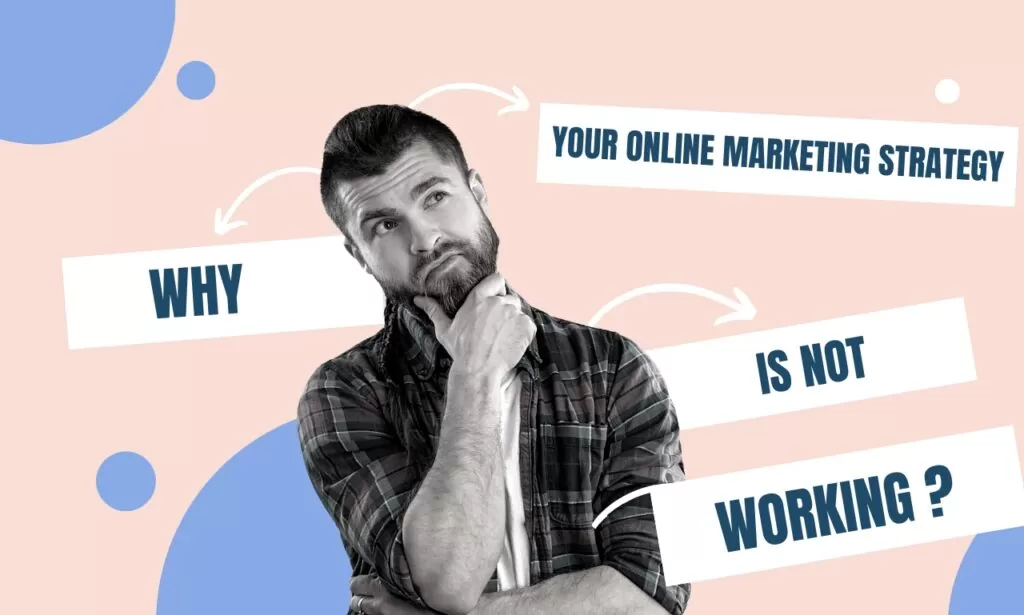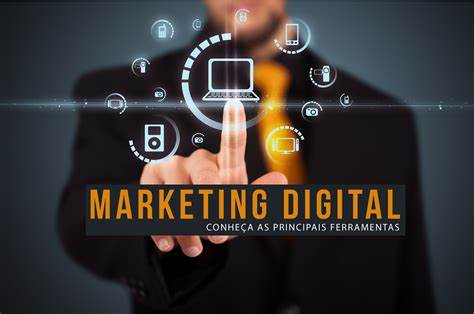Why Your Digital Marketing Strategy Isn’t Working (And How to Fix It)
In today’s competitive digital landscape, having a digital marketing strategy is essential. However, many businesses find that their strategies aren’t delivering the desired results. If you’re struggling to gain traction, increase traffic, or convert leads, you’re not alone. In this article, we’ll dive into the reasons why your digital marketing strategy may be failing and offer actionable solutions to turn things around. 1. Lack of Clear Goals and Objectives One of the most common reasons a digital marketing strategy fails is the absence of clear, measurable goals. If you don’t know what success looks like, it’s impossible to achieve it. Vague objectives like “increase traffic” or “boost sales” aren’t enough. You need to set SMART goals—Specific, Measurable, Achievable, Relevant, and Time-bound. For example, “Increase organic traffic by 25% in the next six months” is a clear, actionable goal. How to Fix It: Start by defining your goals. Break them down into smaller, actionable tasks that can be tracked and measured. Use tools like Google Analytics to monitor your progress and adjust your strategy as needed. 2. Poor Audience Targeting Even the most well-crafted campaigns will fail if they’re not reaching the right audience. Many businesses make the mistake of casting too wide a net or not fully understanding their target audience. Without a clear understanding of who your ideal customer is, your efforts will be scattered and ineffective. How to Fix It: Conduct thorough audience research. Create buyer personas that represent your ideal customers, including demographics, interests, pain points, and buying behaviors. Tailor your messaging and content to resonate with these personas. Use tools like Facebook Audience Insights or Google Analytics to gather data on your audience and refine your targeting. 3. Inadequate Content Strategy Content is at the heart of digital marketing, and without a solid content strategy, your efforts will fall flat. Many businesses either produce too little content, focus on quantity over quality, or fail to optimize their content for SEO. Additionally, not having a consistent publishing schedule can hurt your visibility and engagement. How to Fix It: Develop a comprehensive content strategy that aligns with your goals and audience. Focus on creating high-quality, valuable content that addresses your audience’s needs and pain points. Optimize your content for SEO by conducting keyword research and using those keywords strategically in your content. Establish a consistent publishing schedule and stick to it. 4. Neglecting SEO Best Practices Search engine optimization (SEO) is a critical component of digital marketing. If your website and content aren’t optimized for search engines, you’ll struggle to rank in search results, making it difficult for potential customers to find you. Common SEO mistakes include neglecting on-page SEO, poor keyword targeting, and slow website speed. How to Fix It: Ensure that your website follows SEO best practices. This includes optimizing meta tags, using header tags, creating keyword-rich content, and improving site speed. Regularly update your content to keep it relevant and ensure it’s mobile-friendly. Use tools like Google Search Console to monitor your SEO performance and identify areas for improvement. 5. Ineffective Use of Social Media Social media platforms are powerful tools for connecting with your audience, but many businesses fail to use them effectively. Posting sporadically, lacking a clear social media strategy, or failing to engage with your followers can all lead to poor results. How to Fix It: Develop a social media strategy that aligns with your overall digital marketing goals. Identify the platforms where your audience is most active and create tailored content for each platform. Engage with your followers by responding to comments, asking questions, and participating in conversations. Use social media analytics tools to track your performance and adjust your strategy as needed. 6. Ignoring Data and Analytics Without data, you’re flying blind. Many businesses fail to track their digital marketing efforts, making it impossible to know what’s working and what isn’t. Ignoring data and analytics leads to wasted time, money, and resources. How to Fix It: Leverage data and analytics to inform your decisions. Set up Google Analytics and other tracking tools to monitor your website traffic, user behavior, and conversion rates. Use this data to identify what’s working and what’s not, and make data-driven decisions to improve your strategy. 7. Not Adapting to Change The digital marketing landscape is constantly evolving, and what worked a year ago may not work today. Businesses that fail to adapt to new trends, technologies, and consumer behaviors are likely to fall behind. How to Fix It: Stay up-to-date with digital marketing trends and be willing to adapt your strategy as needed. Continuously test new tactics, stay informed about algorithm updates, and be open to experimenting with new platforms and tools. Regularly review your strategy to ensure it remains relevant and effective. 8. Overlooking Email Marketing Email marketing is one of the most effective ways to nurture leads and maintain relationships with your audience, yet it’s often overlooked. Failing to build and engage your email list can lead to missed opportunities. How to Fix It: Implement an email marketing strategy that includes building your email list, segmenting your audience, and creating personalized, value-driven content. Use email automation tools to streamline your campaigns and track their performance. 9. Lack of Integration Across Channels A disjointed digital marketing strategy can lead to inconsistent messaging and missed opportunities. If your campaigns aren’t integrated across channels, you’re likely to confuse your audience and dilute your brand message. How to Fix It: Create an integrated marketing strategy that ensures consistency across all channels. Align your messaging, branding, and goals across your website, social media, email, and paid advertising. Use tools like marketing automation platforms to coordinate your efforts and ensure seamless integration. Conclusion: Revamping Your Digital Marketing Strategy If your digital marketing strategy isn’t working, don’t despair. By identifying the common pitfalls and implementing the solutions outlined above, you can turn things around. Remember, a successful digital marketing strategy requires continuous optimization, a clear understanding of your audience, and a commitment to staying informed about industry trends.





